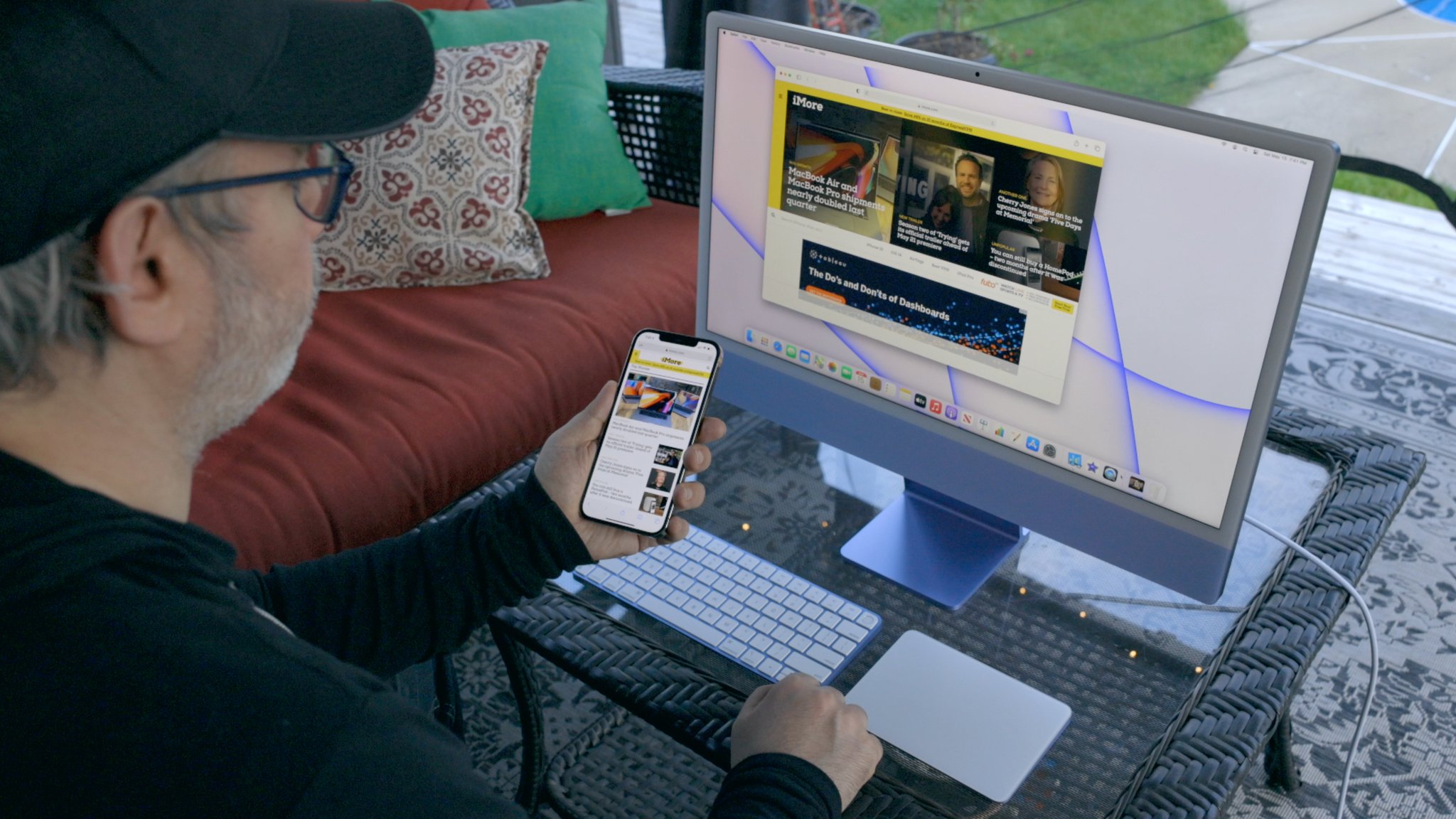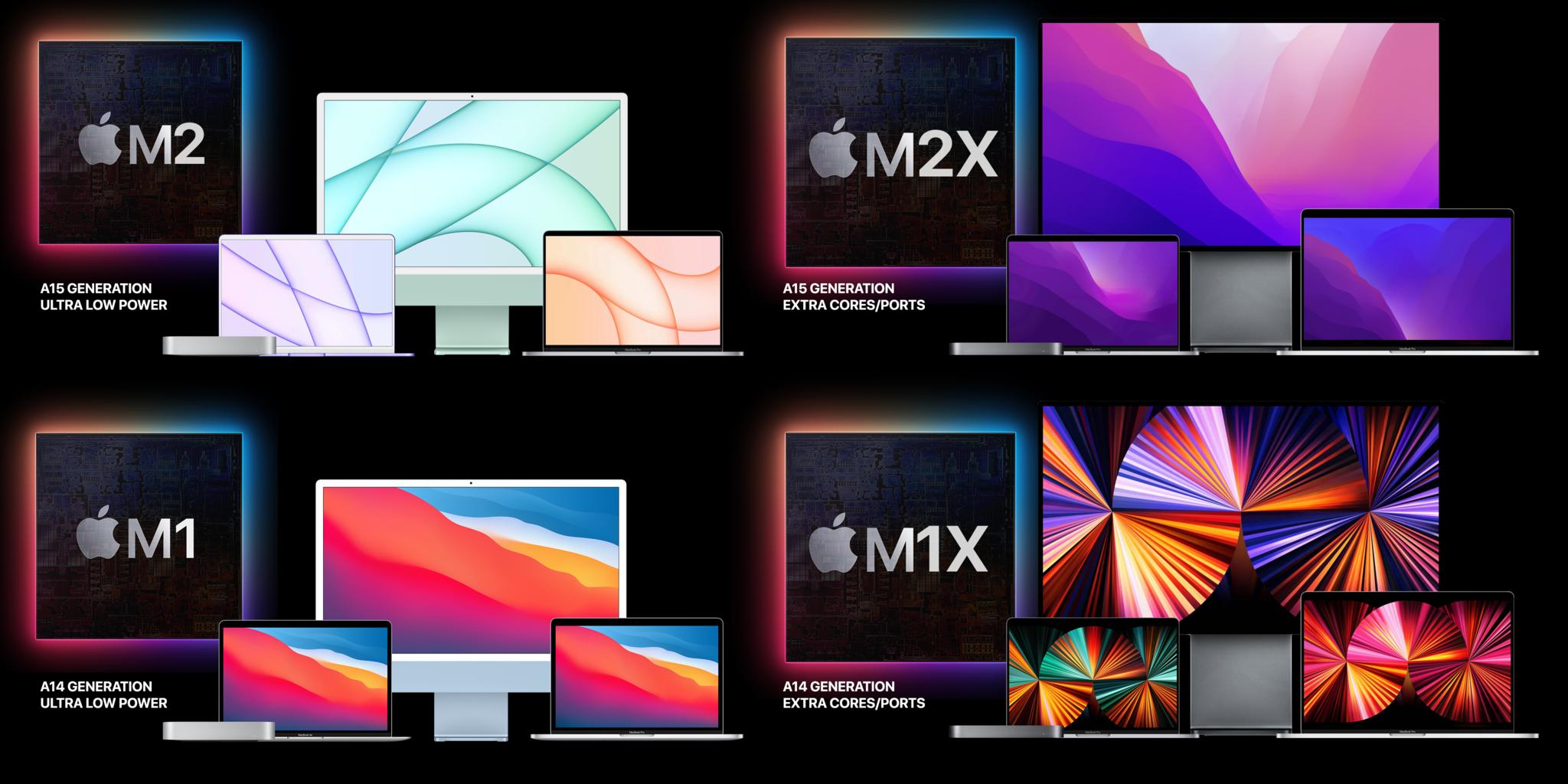M1X vs M2X — What should Apple put in the next MacBook Pro?

Why would Apple put an M1X into the MacBook Pro and iMac Pro if M2 is just around the corner? Why not just wait and use M2X? Well...
Numbers and letters
If Apple sticks the naming conventions they've been using for… the last decade of silicon, then the number on the chip means the generation of the silicon, and whether or not it has an X grafted on the end means whether or not it has extra cores and other features grafted onto the package inside. That's it, that's all… Kinda.
I'll get to M2X in an intel TDP hot minute, but it's a little more complicated than that. Why? Because Apple is currently on the A14 in terms of silicon generation, and yet, instead of using M14 for the exact same silicon generation on the Mac, they decide to restart the numbering with 1. M1.
Even though A14 and M1 have the same Icestorm efficiency cores, Firestorm performance cores, and no such cool codenamed graphics and neural engine cores. The M1 just has more of the eCores and pCores than the A14. Along with bigger memory options, as well as thunderbolt controllers and Mac-specific IP for virtualization and x86 emulation. Because both the letters and numbers are different, people either don't realize or keep Momento'ing — Dory'ing — that A14 and M1 are the same generation. Why you even see people… and publications… wondering out loud about an M1 iPhone. As redundant as that would be.
Maybe, in another, simpler timeline — the Alligator Loki or Frog Thor of timelines — Apple would have stuck with calling the M1 the A14X because the pattern is so similar to the previous A12 for iPhone, A12X for iPad Pro, A10 for iPhone, A10X for iPad Pro. But we don't live in that timeline. That timeline was pruned. So, we're stuck with A14 and M1.
Although... that does save the X for an even more X-tra M1X if Apple decides to stay with the current naming scheme.
Scaling the silicon
Time was Apple only needed the iPhone and the iPad Pro version of any particular generation of custom silicon. The aforementioned A10 and A10X, or A12 and A12X. And yes, they were used in the iPad Air and Apple TV as well, but I'm really trying to keep this simple.
Master your iPhone in minutes
iMore offers spot-on advice and guidance from our team of experts, with decades of Apple device experience to lean on. Learn more with iMore!
Nowadays, Apple needs the iPhone, iPad Pro slash low-power Mac, and high-performance Pro Mac version of this particular generation of custom silicon. A14, M1, and presumably, M1X. And, who knows, maybe an even higher-end Pro Mac-as-in-Mac-Pro version at some point as well… but, yes, simple!
In other words, A14 for iPhone, M1 for iPad Pro and MacBook Air, Mac mini, etc. M1X for 16-inch MacBook Pro, iMac Pro, etc.
If it helps, think of it in old school Intel parlance — A14 would be like current generation Ice Lake i3, M1 like Ice Lake i5, and M1X like Ice Lake i7… just… with way better performance efficiency across the line.
Timelines
So, now we get to where the next round of confusion is coming from — 2021 is half over already, and we still haven't seen any M1X Pro-level Macs. Which also means fall is just around the corner, which means new iPhones are coming, which means a new Apple silicon generation is coming with them. The A15.
That's led some people to say it's too late. Apple can't announce an M1X or anything else based on A14 generation silicon. Not any more. They done. Which… maybe? But certainly not definitely.
Apple announced the A14 in September and shipped it in October of this year. They didn't announce and ship the M1 until November and still announced M1 products in April of this year.
Now, some years, Apple only makes the iPhone version of a silicon generation. There was an A10 and A10X, and A12 and A12X, but there was no A11X or A13X. The closest we got to the latter was an A12Z, with all its graphics cores fully operational and a few other tweaks.
And Apple announced that A12Z for the iPad Pro in March of 2020, almost 6 months after announcing the A13 for the iPhone 11. And the iPad Pro stuck with the A12Z until it was replaced by the M1 in April of 2021, almost 6 months after Apple announced the A14 for the iPhone 12 and iPad Air.
Both times, for six months — six long months — the iPhone and even iPad Air had newer generation silicon and better single-core performance than the iPad Pro. And Apple had a grand total of zero-fs to give, zero, fresh out.
Because the iPad Pros still had much, much better multicore performance, because they were still much, much more massively multicore. Because of that X, as in extra core architecture. Or Z, you know, just go with me here.
M1X vs. M2X

So, for the sake of argument, let's say Apple decides to keep the M-series on pace with the A-series, with new releases every year, on the year, and after the A15, Apple announces an M2 on the same generation silicon.
Slightly better process, 20% or so better performance balanced by 20% or so better efficiency, maybe quite a bit more for graphics, and maybe on the ARMv9 instruction set architecture, even though ARM-v9 mostly just tries to emulate and give to other licensees most of what Apple's already been doing for the last few years. But maybe we get a nice vector boost anyway.
First, M2 would almost certainly be an ultra-low-power chip, like M1, destined for the iPad Pro and MacBook Air, like M1. Second, rumor has it we're not getting that next iPad Pro and MacBook Air until next year anyway. Which means we won't be getting M2X until then either, if even then. Given how long we've had M1 for without M1X.
And, again, in old school-Intel parlance — A15 would be like next-generation Tiger Lake i3, M2 like Tiger Lake i5, and M2X like Tiger Lake i7… just… still with way better performance efficiency across the line.
And that timeline still leaves… plenty of time for M1X MacBook Pros, maybe even M1X Mac mini Pros, and stretch goal, M1X iMac Pros this fall, even thereafter.
What's in a name?
Sure, if Apple goes back to September for iPhones and October for Macs, we could have A15 and better single-core perf in our phones than M1X provides in our Pro-level Macs. Which, yes… awkward, but nothing that hasn't happened before with our Pro-level iPads.
The alternatives, the… multiverse of madness… possibilities include Apple waiting and going M2X for the Pro Macs instead, though I really don't want to wait that long, you? Or using a name like X1 instead of M1X to make comparisons more… Apples to Apple's other Apples. But that doesn't change the actual silicon inside.
Apple could use M2 as the name M1X, I guess, to make the high-performance version a higher-number, but then what do they call the next-generation ultra-low power version, M3, which just re-creates the same problem further down the road. Or… call it M1S instead, to kick it even further down the road?
Apple could also tune for higher frequencies and performance in M1X than the ultra-efficiency-focused A15 or M2 would ever allow. Which is what I'm personally hoping for, only partially so that I don't have to make this exact same video again after they're announced.
Missing the SoC for the single-core

All of that not only misses the point entirely; it misses the SoC for the single-core: An iPhone, even an iPad Pro or MacBook Air, will just never have the sheer number of cores, ports, memory, or storage, or the display size, of a Pro-level Mac. And, regardless, every year, there'll be at least one, maybe several, faster Macs.
Apple has their roadmap, based on the availability of leading-edge — hell, bleeding-edge nodes — and the… maybe lack of availability of trailing edge nodes, so it's going to be challenging to predict when exactly everything is going to hit. Maybe including for them.

Rene Ritchie is one of the most respected Apple analysts in the business, reaching a combined audience of over 40 million readers a month. His YouTube channel, Vector, has over 90 thousand subscribers and 14 million views and his podcasts, including Debug, have been downloaded over 20 million times. He also regularly co-hosts MacBreak Weekly for the TWiT network and co-hosted CES Live! and Talk Mobile. Based in Montreal, Rene is a former director of product marketing, web developer, and graphic designer. He's authored several books and appeared on numerous television and radio segments to discuss Apple and the technology industry. When not working, he likes to cook, grapple, and spend time with his friends and family.
